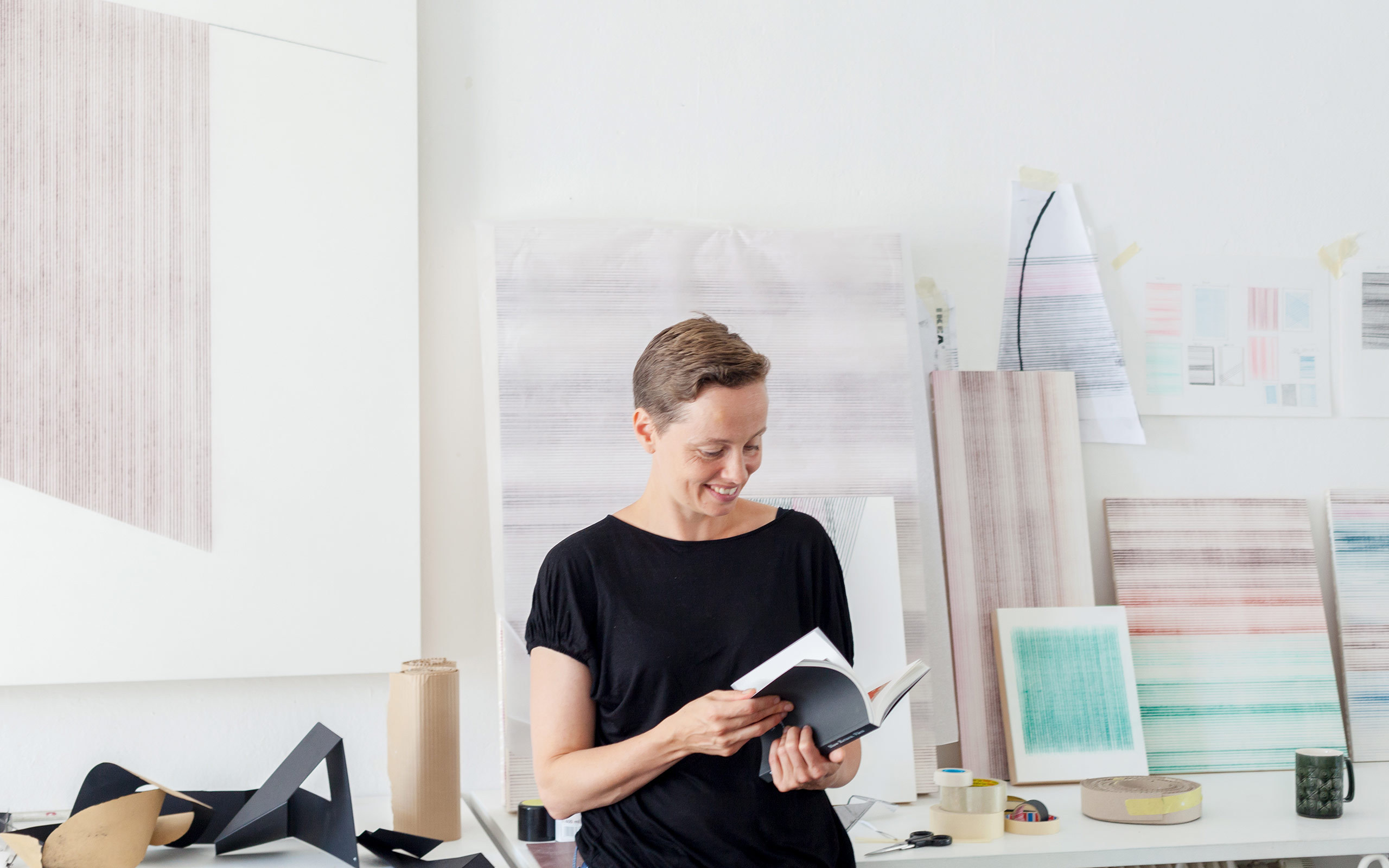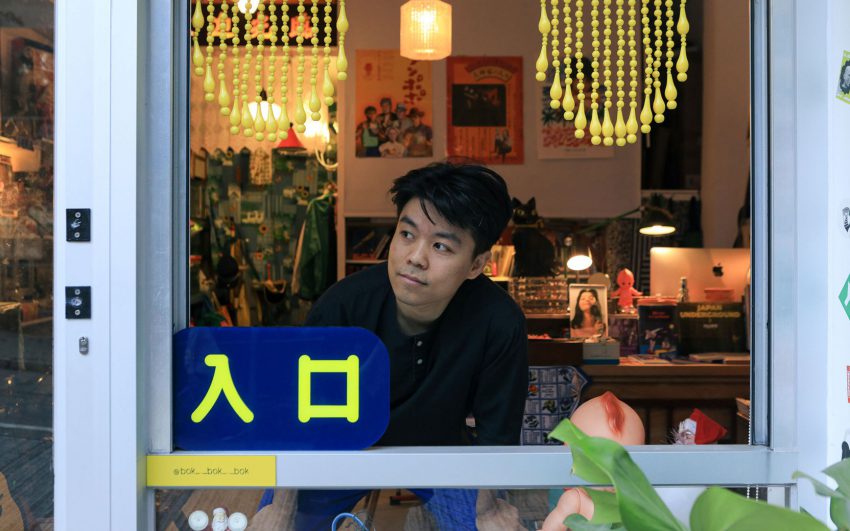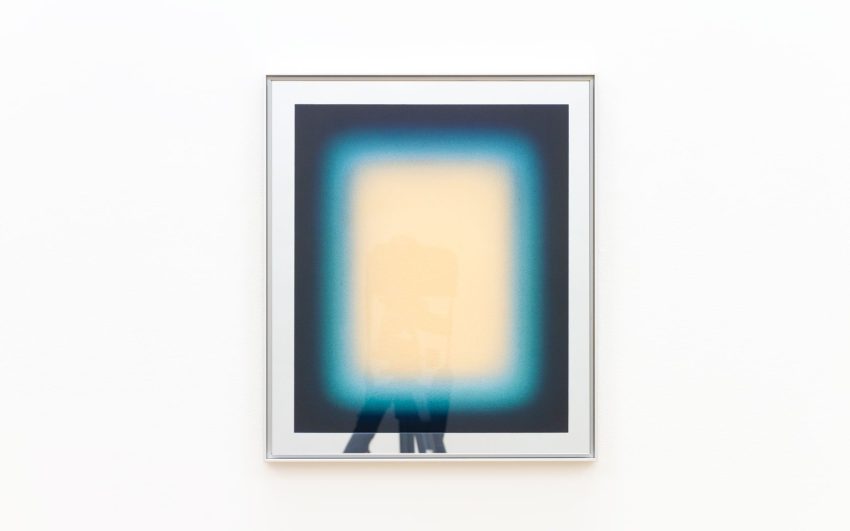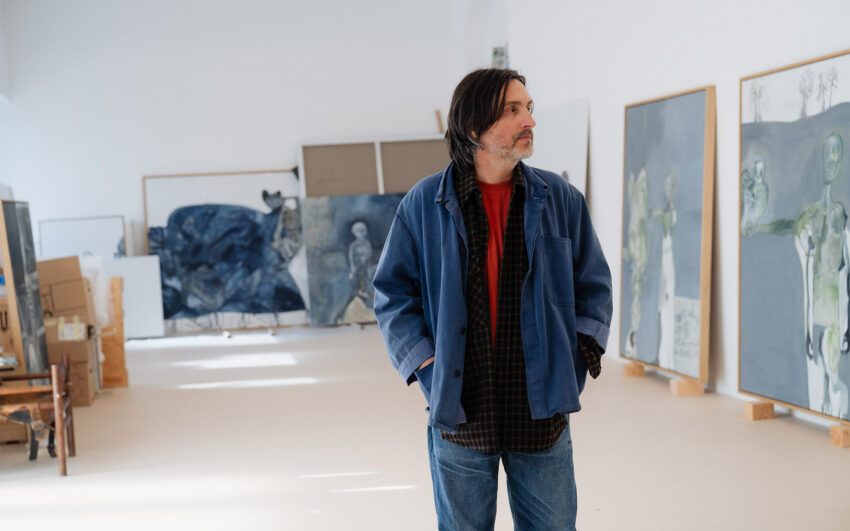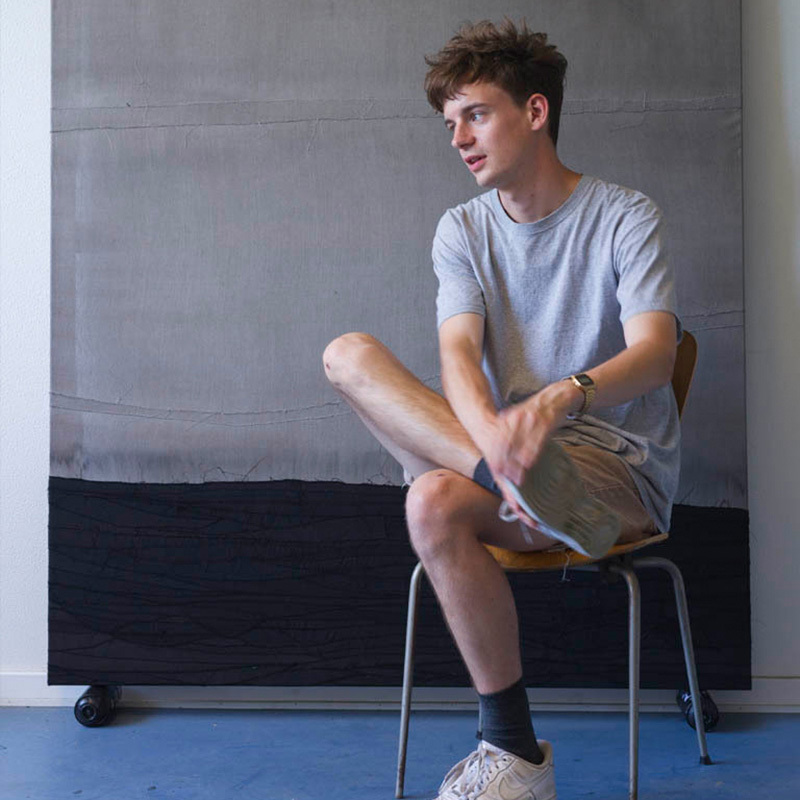Sofie Thorsen poses abstract questions on the subject of space, its formal language and design, always starting from concrete architectural, temporal and geographical situations. In her Play Sculptures, for example, she deals with a forgotten typology of forms during the art-in-architecture movement of the post-war period, emphasizing the intertwined character of abstract sculpture, architecture and urban planning, aesthetics and society.
How would explain to someone, who doesn’t know you, your work, what you do every day?
Each day I am in my studio spending time with a variety of concrete work on the various projects in the form of developing, sketching, finalizing, and actually producing. Parallel to this there is the entire office work, which is considerable: answering e-mails, processing images, editing texts, doing taxes.
You don’t work from home?
No, not really, although I have a workplace at home; but I only use it for answering e-mails or working on texts and images. It’s not that I dislike working from home. At one time I used to do it often. At the moment, however, it only happens when I have to concentrate on one particular thing, like now on the book project. There I’m not distracted by all the other projects in the studio where I have my storage, the archive, and all the documents. Here I can work on large projects without having to be careful not to produce dirt and dust. The chalk-line images that I am working on right now would not be possible to do in my home because the loose pigment spreads everywhere while I am working. I have a small archival and office room where I work on the computer and make small-scale drawings. The more flexible room is the one in which we are sitting right now.
Can you remember the moment when you thought, “Yes, I’ll become an artist.” When did you make the decision to earn your livelihood as an artist?
That was a gradual process. There wasn’t a single special moment in which it was clear it has to be like that! Of course one does have the intention to practice it later when one applies at the art academy. But I hadn’t really thought it through. As a student one doesn’t necessarily think about what will happen after the study. At the time, I certainly did not think of Vienna.
You’ve worked as an artist for twenty years now. Looking back, what has changed during that time? What does it mean today to be an artist?
Now I lead another life as an artist than I did after the completion of my studies. But that has also to do with aging and not only with changed conditions in the art world. The demands placed on an artist have changed a great deal, especially in the last five years. The contemporary art market plays a very different role now. What that really means is, I think, is not predictable.
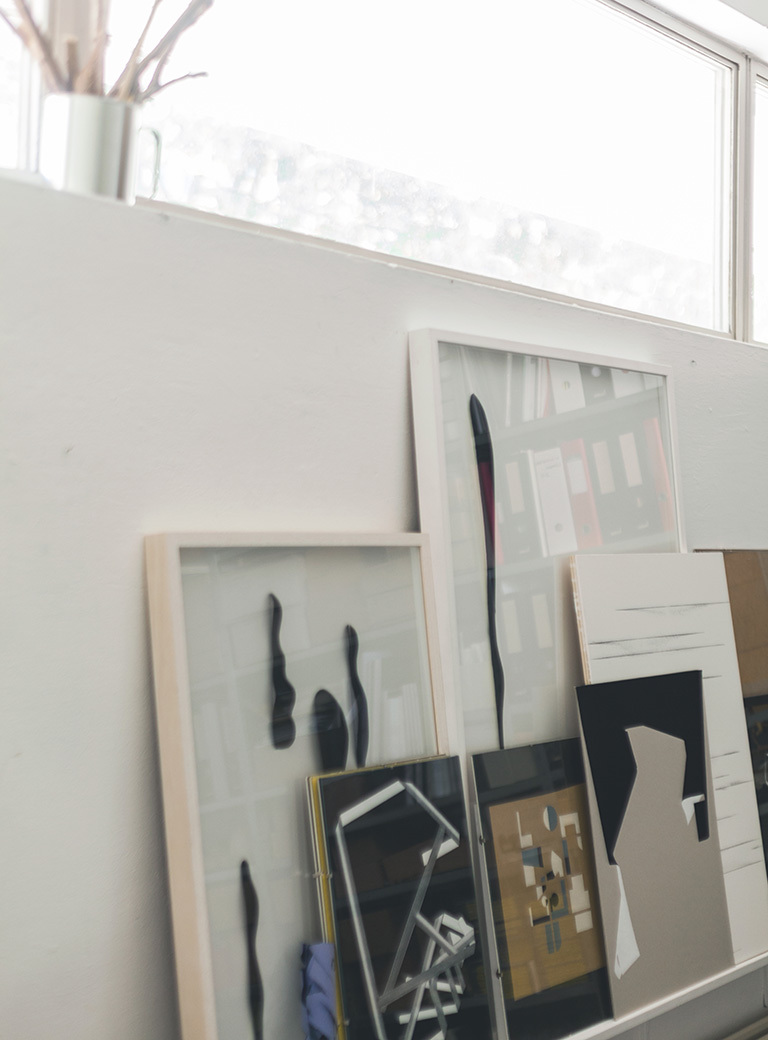
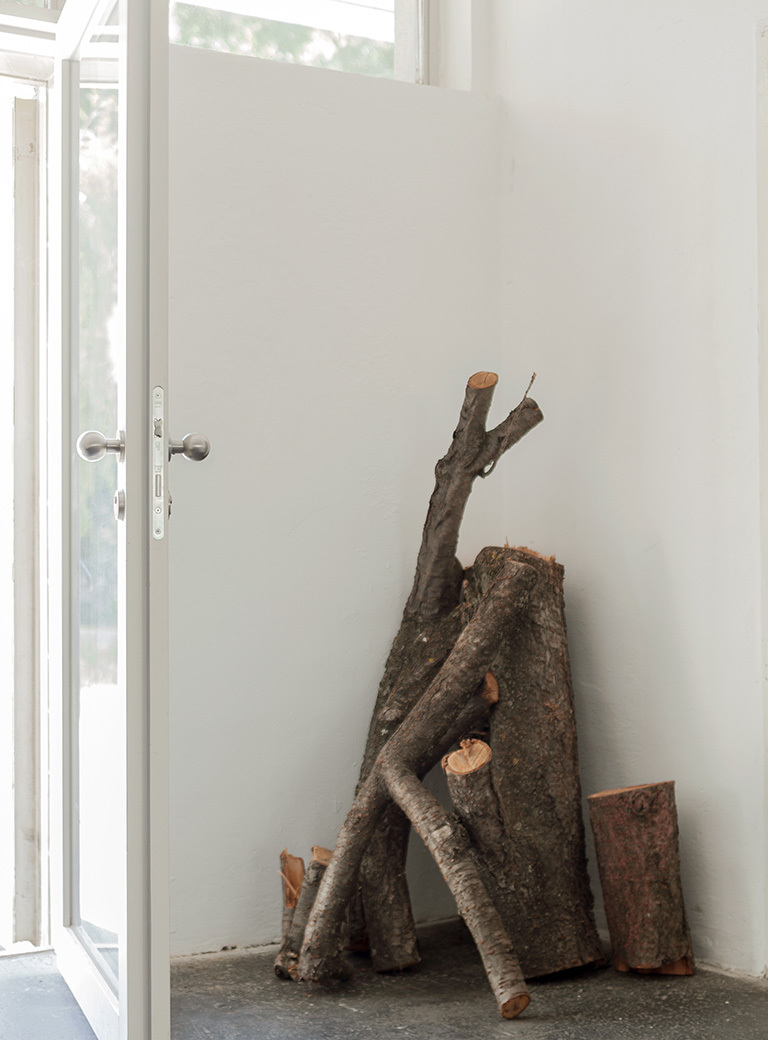
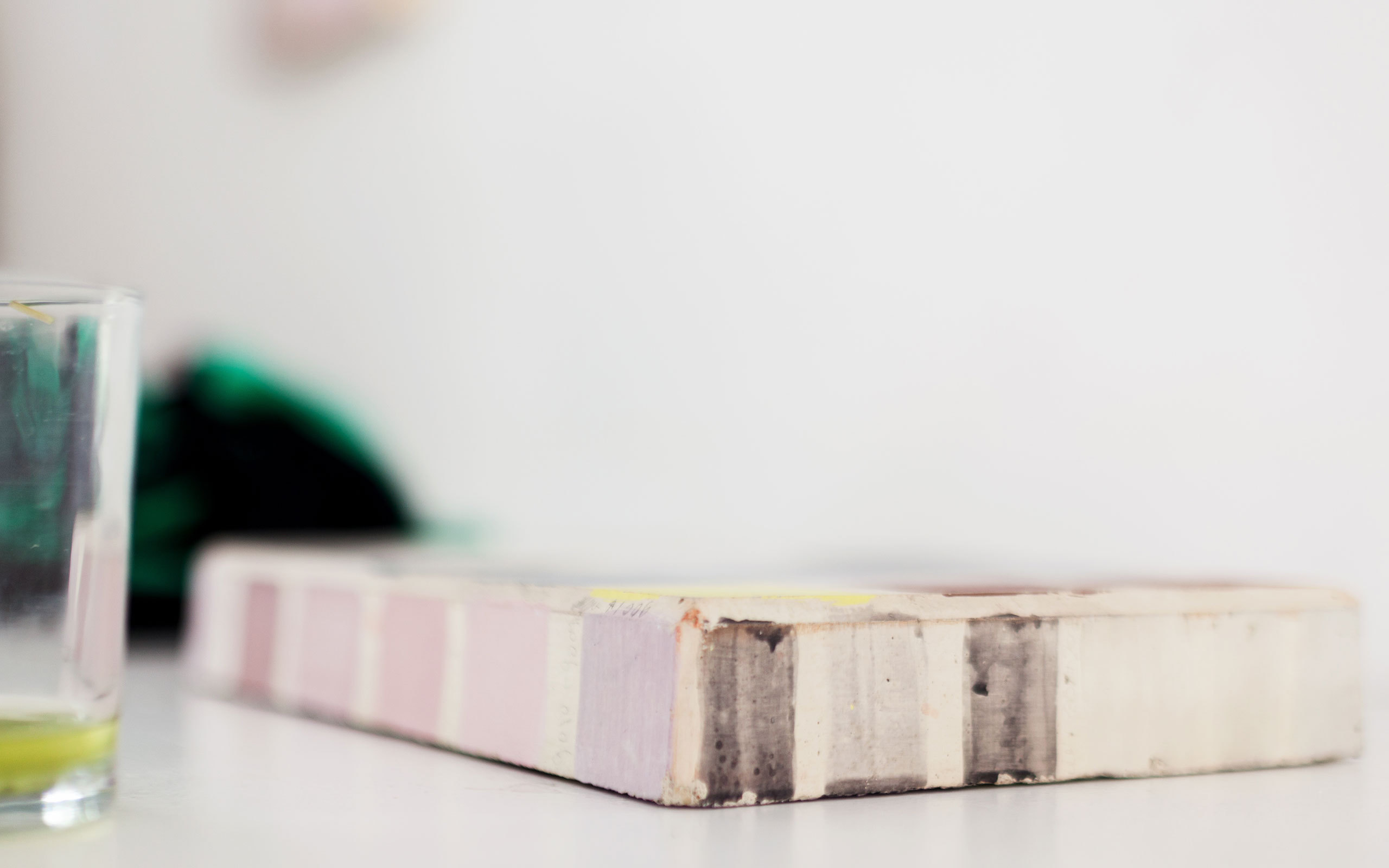
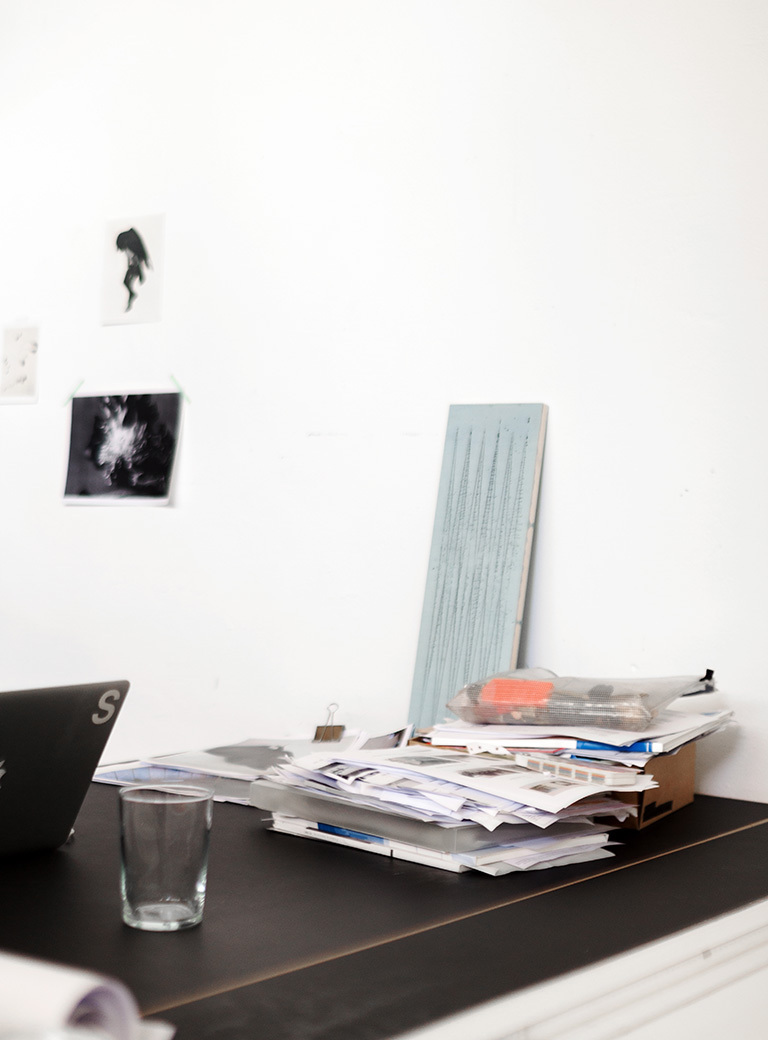
You’ve just returned from Denmark, from your summer vacation. You were born in Aarhus, the second largest city in Denmark. How did you grow up?
I was born in Aarhus but lived there only until I was two. Later I grew up in the Northwest of Denmark on Mors, a relatively large island in the Limfjord. Between my fourth and seventh year I have lived with my parents in Africa, in Zambia. My father was a teacher at the UN school there. I still have very vivid memories of that time. After school and a year in Barcelona, I have studied architecture in Copenhagen, but I was a rather unfocused student. After two years of studying architecture, I had the opportunity to study one year in Hungary. I studied with Dóra Maurer in Budapest, which was an extremely important time for me. It was the moment in which I realized what conceptual work means. Only after this time it was clear that I would not continue to study architecture but art. Back in Copenhagen I continued my studies at the art academy until I moved to Vienna.
In one of your last works you were dealing with "play sculptures" in Vienna, objects which in the context of “art-in-architecture” appeared as playgrounds and “art in public places”. In the 1950s/60s, the city of Vienna was the main promoter of modern art and supported the fine arts, including "play sculptures" with the utopian conviction that fine art is able to make a contribution to the improvement of life and human interaction.
I noticed the historical "play sculptures" from the 1950s when I worked with other objects of the Viennese art-in-architecture and admired their advanced language of form at a time when one rarely worked abstract in the public space. These objects were like small architecture utopias, which appeared somewhere between ‘utility plastic’ and the fine arts. Later, the sculptor Josef Schagerl, who at the time had designed many of the sculptures, confirmed that he and his colleague Josef Seebacher had considered these "play sculptures" an opportunity to produce abstract sculptures for the public space. And the opportunity to work abstract seems to have been as important for these artists as the connection between art and life, if not even more important.
Art as means to improve life and human interaction: One would think of it more of a typical Scandinavian topic, wouldn’t you agree?
No, it is not Scandinavian. The idea that art and life belong together has, in my view, more to do with Bauhaus than with Scandinavia. Bauhaus has certainly influenced Scandinavia, but also the Austrian, French, American postwar period.
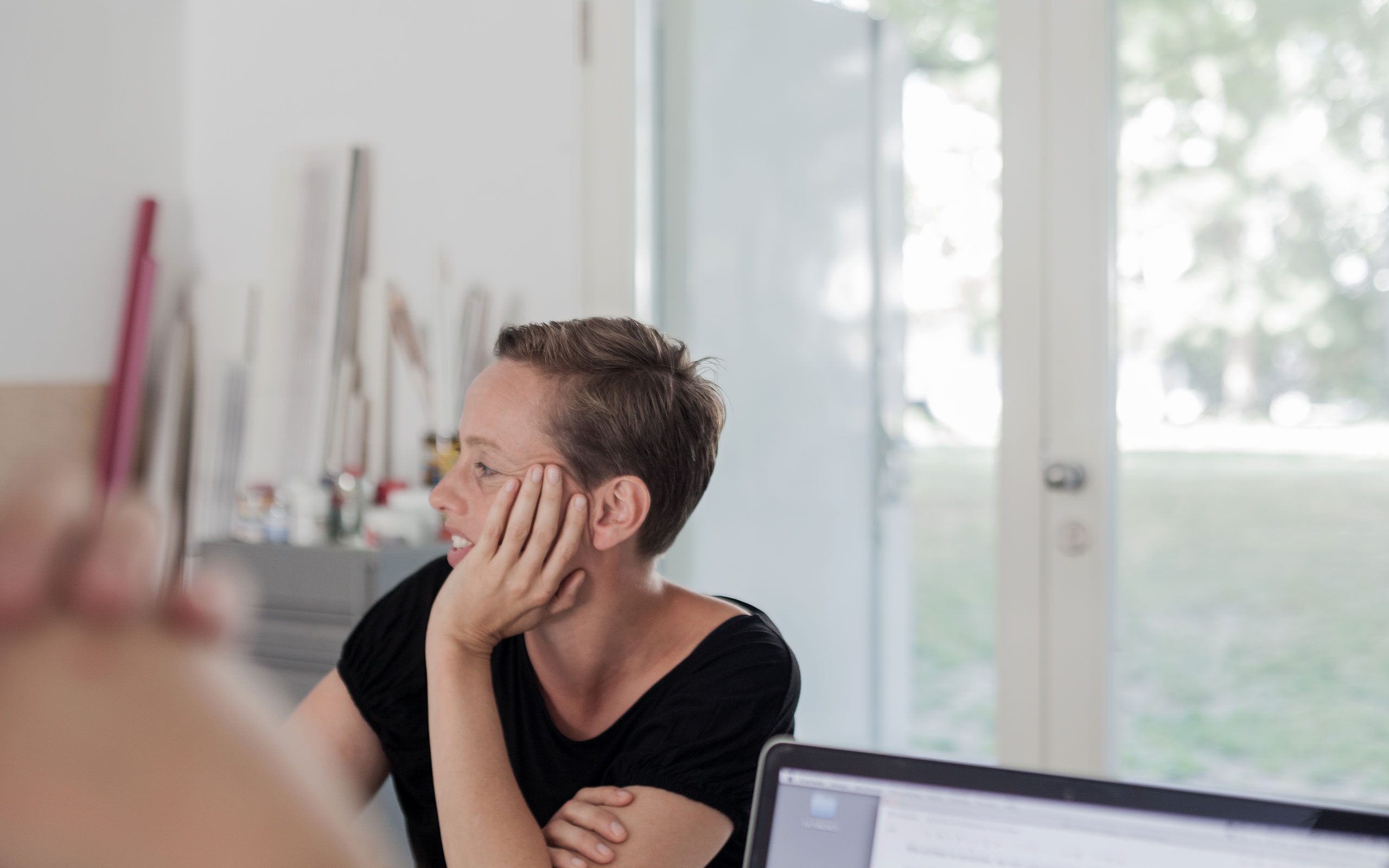
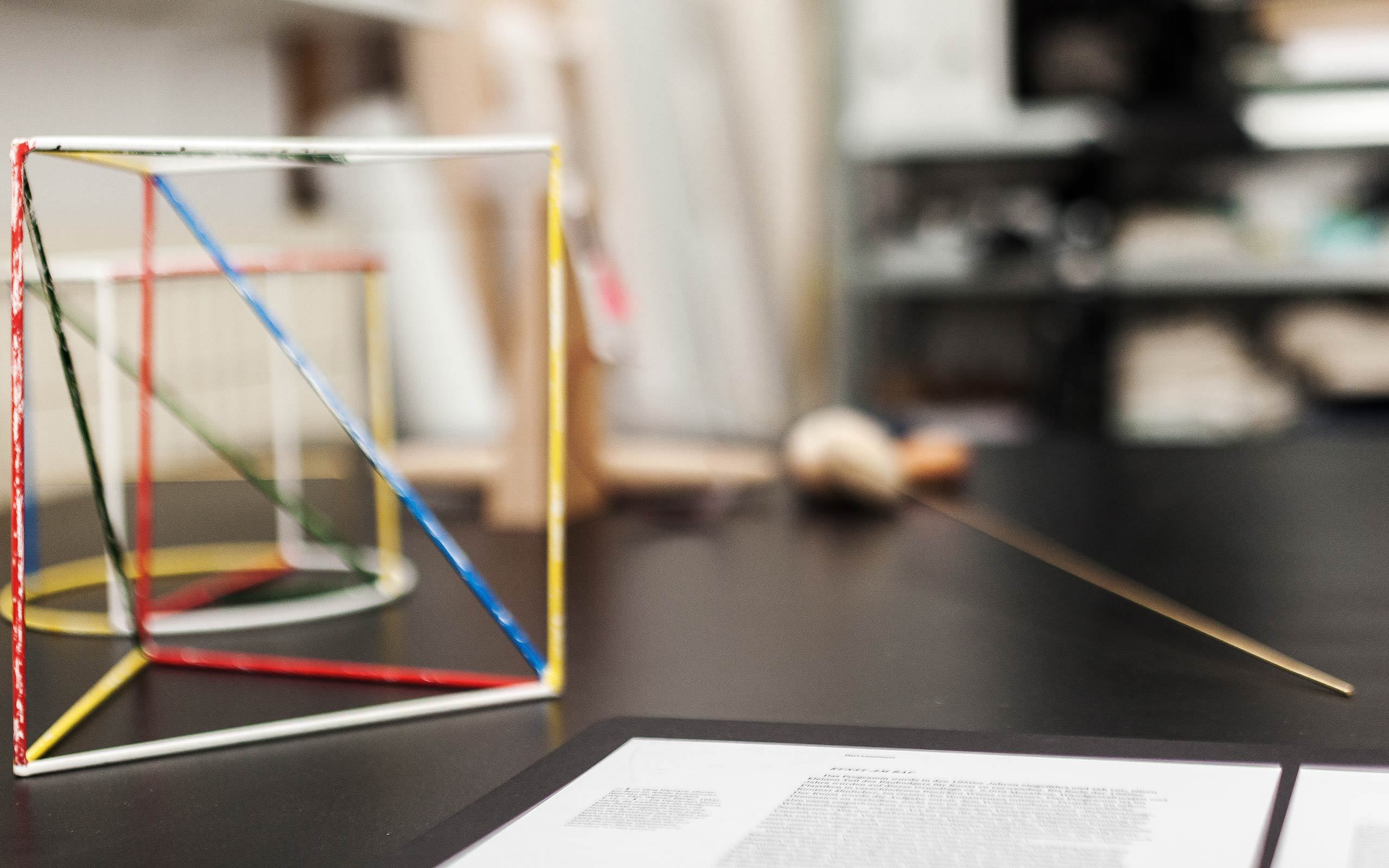
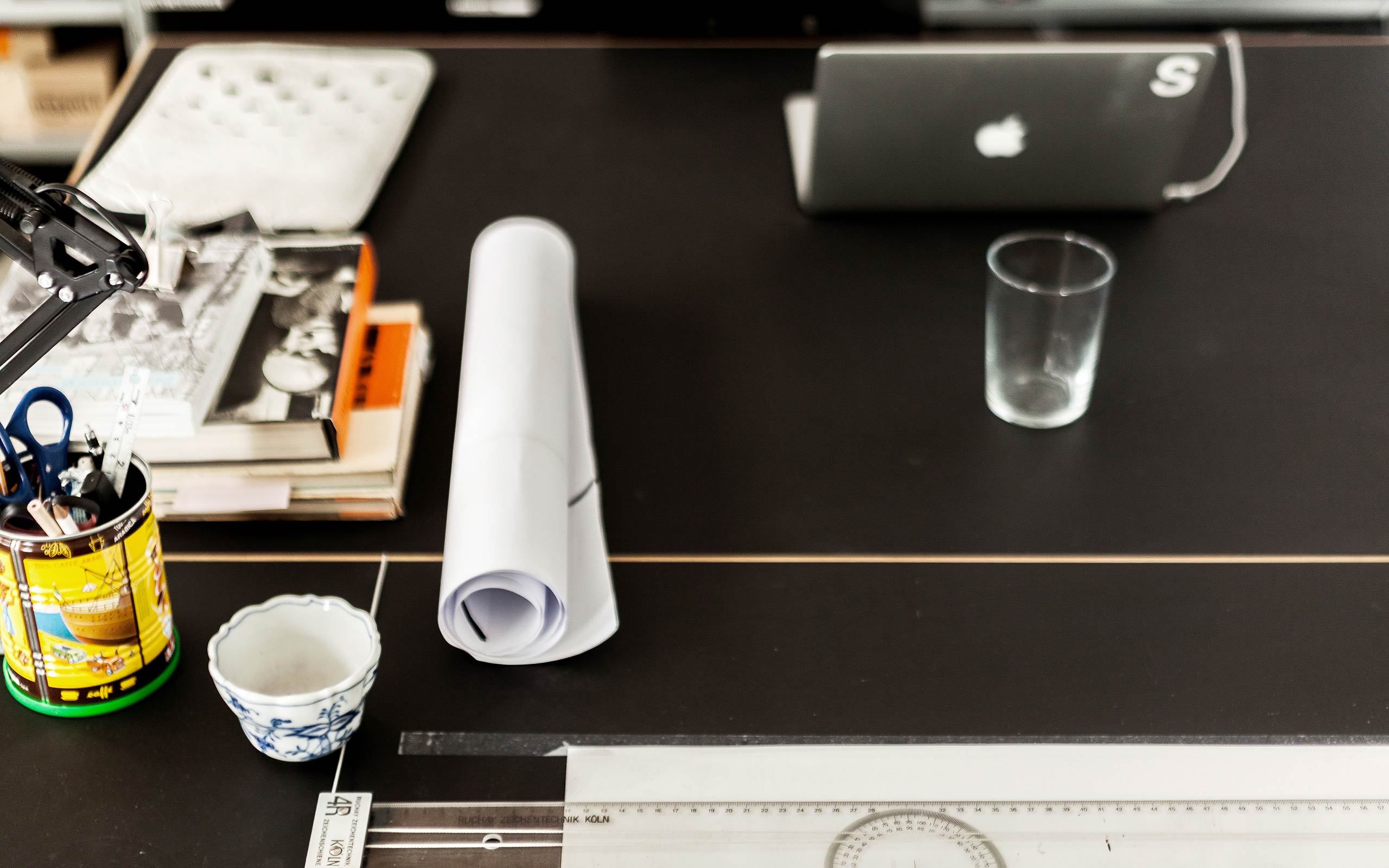
Do you consider the claim that art should contribute to the improvement of people’s lives still in keeping with the times or is too much demanded from art and the artists?
Art can certainly move things. But I don’t think it is the primary mission of art, to improve our life together. It is rather a practice of posing questions rather than giving answers. I think it is rather the task of architecture and design to see to it how our living spaces can be shaped. With this I don’t mean that art should not deal with the situation of the world or with the conditions in which we live.
This is actually quite a political issue. The "play sculptures" in particular formulate a concrete “vision of society.” Do you see yourself as a political artist?
Political issues inevitably come up in my work because I deal with places and topics that have to do with our environment. But I wouldn’t call myself a "political artist". That is certainly not the essence of my work. Looking at the “play sculptures” series for example, it began with an interest in objects the illustrations of which I had discovered but didn’t really know and which for Vienna at the time were extremely progressive and aroused a direct attraction and curiosity. I consider the entire series and its various appearances as a questioning of this phenomenon with all its formal, social, and historical aspects, including the political meaning of abstraction in the public space shortly after WWII. I try to approach and understand it knowing that I won’t really succeed. I try to develop independent work with material that I have researched, works that function and can be seen independently of their raw materials.
That’s almost a bit scholarly?
Yes, and no. One might be able to categorize it as a kind of "artistic research". In addition to structured research in archives and documents I use formal, material, haptic methods that have more to do with the body than with language. I often have the feeling that there would still be so many texts to read and much more picture sources to be explored, but the core of my work does not lie in its preparation but in the work itself.
Since when have you been in Vienna?
Since 1999, I came immediately after the Haider election before the black-blue government established itself. I didn’t know Vienna and hardly spoke any German. I couldn’t order more than a cup of coffee. I knew relatively little about Austria’s postwar history, its missing coping with the war and found myself suddenly in the middle of this incredible emotional political phase. It was a dramatic time.
Why of all places Vienna as your location?
It was rather accidental. It was always clear to me that I would go abroad. Henrik Olesen, whom I really appreciate, suggested that I should go to Vienna where Renée Green was teaching at the time. Although I had actually something else on my mind, I did eventually go to Vienna and I have never regretted it. In Vienna I experienced a level of theory and debate at the university and in the art institutions, which I had not found in Copenhagen at the time. There were institutions like the Depot and the Generali Foundation, which mounted incredible exhibitions. They presented themes that I was interested in.
Creative people claim that Vienna compared to other European metropolisses is rather boring. What has Vienna to offer as a place for artists?
Today, I am already missing institutions which were still exstant five years ago and which left a huge gap. On the other hand, many very good people are still working here. The city still organizes excellent exhibitions. Vienna is a city in which I can work well, that has a very good infrastructure and one can still afford living here, which has become increasingly more difficult in other cities. However, I have to leave the city regularly.
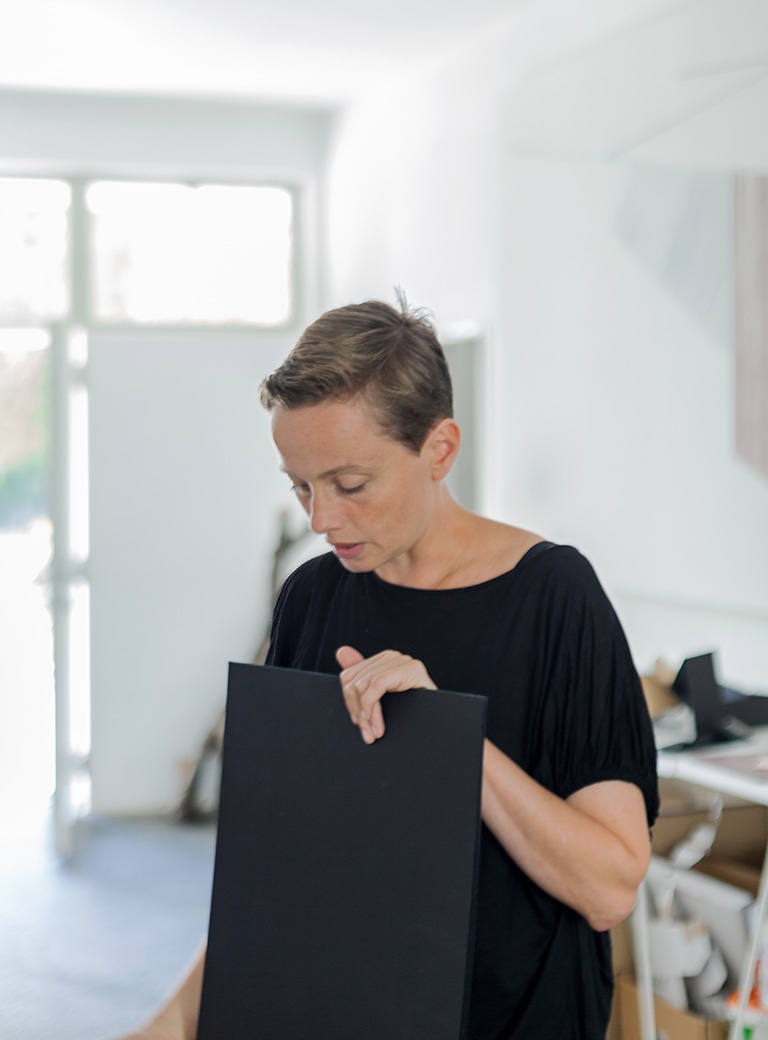
Is there a place where you can relax and recover, a place that provides serenity and new energy? Where do you get inspiration?
I love going to Denmark but don’t do it too much; I love to be in Copenhagen. Unfortunately I can’t realize it time-wise. I get inspired during work. Inspiration and recreation, however, are different things. One certainly has to stop occasionally and not think about work. In my case, the moment of inspiration occurs almost always when I work on themes that are on my mind. However, that doesn’t really happen in the forest, it happens rather during research, reading of texts, sketching, visiting exhibitions.
Do you collect works of art by other artists?
I do exchange work with colleagues. I don’t hang my own work, I rather hang works by colleagues.
Do you have any hero? Who influences your work?
I have many heroes, but none in particular. My heroes play various roles. There is no solitaire.
What are you working on right now?
I just finished my book which was published by Verlag für moderne Kunst. Currently I am part of the Abstrakt – Spacial exhibition at the Kunsthalle Krems.
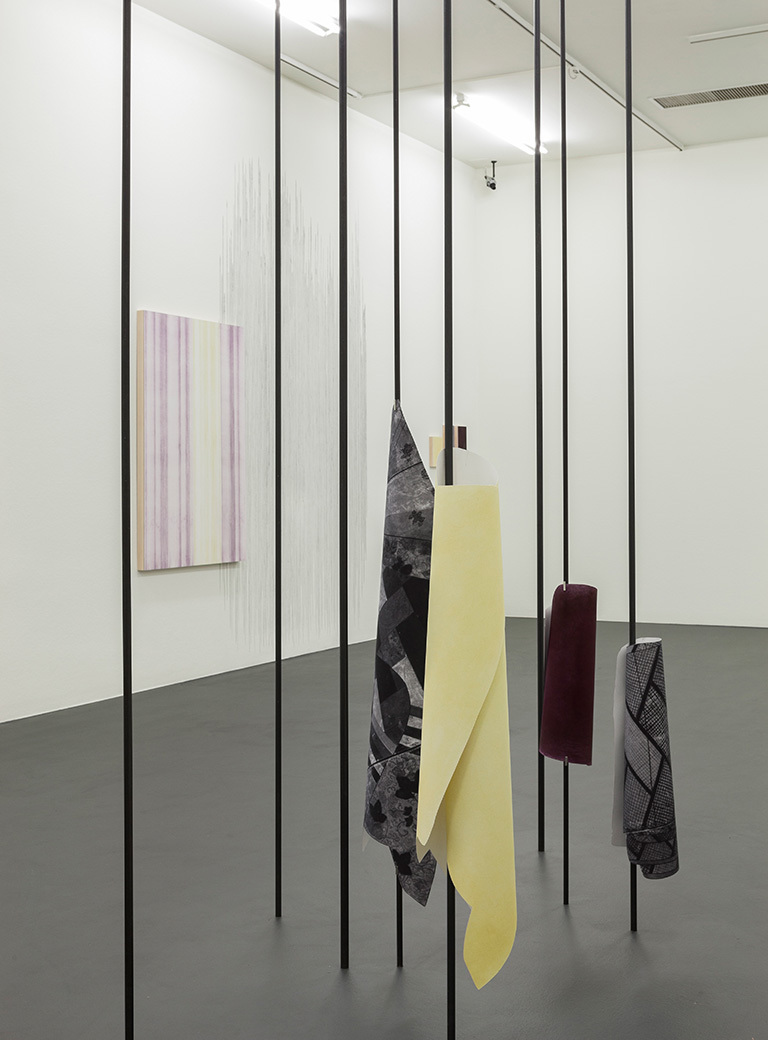
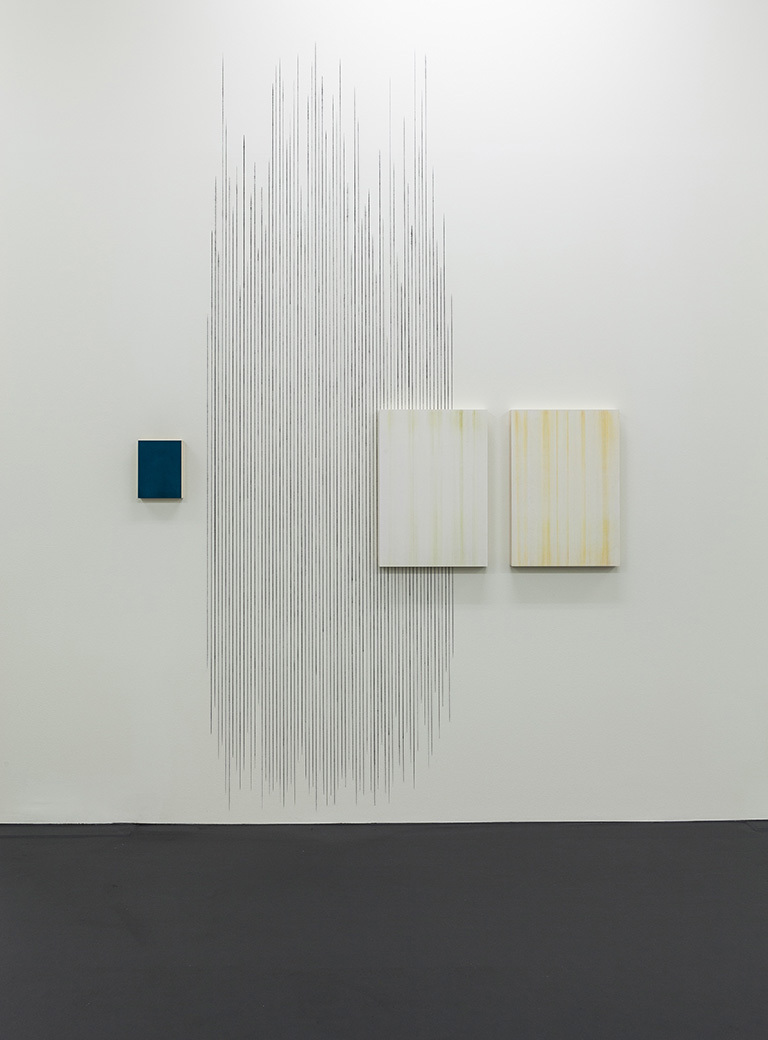
Interview: Michael Wuerges
Photos: Maximilian Pramatarov, Oliver Ottenschläger


